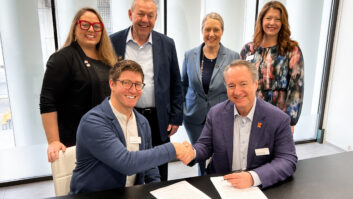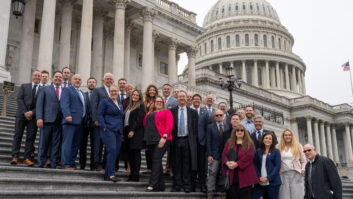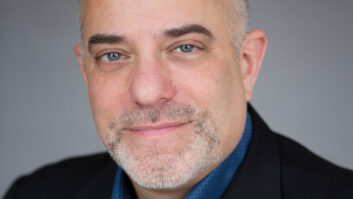In his book, The World is Flat, New York Times columnist Thomas L. Friedman asserts that globalization has leveled the competitive playing field between industrial and emerging markets. He suggests that those who succeed in the new global marketplace will be the ones who update their skills and adapt to changing times.
This logic clearly applies to the residential electronic systems contractor (RESC) market, where for years, any AV aficionado in New York, London, or Sydney could claim to be a RESC. But what differentiates the true professional from the trunkslammer is a proven commitment to a high set of standards, continued education on the latest technologies and techniques, and a set of credentials to present to clients. To help drive up standards and strengthen its members’ competitive edge, the Custom & Electronic Design & Installation Association (CEDIA) is rolling out a series of certification programs, some mandatory, across the globe.
According to Peter Aylett, education manager for UK-based CEDIA Region 1 (Europe, Africa, Russia and the Middle East), as a global trade association, it is critical that CEDIA’s certification programs are standardized internationally. “In technical terms, 98-percent of global activity is similar. Electrons are electrons and light is made up of the same wavelengths wherever you are in the world. This means that the majority of content and examination questions can be developed with a global perspective,” he said.
It is then down to subject matter experts in individual countries to develop content for the country-specific areas of courses and exams. This effort is globally coordinated by CEDIA staff from its three offices.
CEDIA’s three worldwide bases of operation (Region 1, Region 2 – the Americas, and Region 4 – Asia Pacific) communicate and cooperate on the updating of existing and the creation of new CEDIA certifications. For example, the new “home cinema design specialist” exam resulted from global cooperation to create a new level of certification. These developments are ongoing and mean that an individual who passes CEDIA certification (certification belongs to the individual who passes the exam, not the company) can have their certification recognized by any CEDIA member company in any region.
In 2007, CEDIA Region 2 (Americas) certification manager, Laura Pfleger, worked with an international pool of experts, including representatives from Mexico, the UK, and Asia Pacific to update the Designer certification exam. According to Pfleger, this project was successful and resulted in a bank of knowledge that was ultimately used to create an exam appropriate for each geographic region, as no one exam could possibly reflect the specifics of every market with the differences in codes and standards. CEDIA plans to continue to use this model to develop certification exams. That said, the three regions are at different points of progress with their certification offerings and requirements.
CEDIA Region 1
“CEDIA certification is the cornerstone of our education program,” Aylett said. “CEDIA originally introduced certification to the industry as a way of improving skills and as a mark of experience and knowledge. This is still valid, but we have built on this platform to make certification more meaningful for members and, more importantly, for those professionals and homeowners using the services of CEDIA members.”
As of February 1, 2008, CEDIA has required certification for CEDIA electronic systems professionals (ESP) member companies in the UK and Ireland as part of the organization’s global strategy to raise standards within the custom install industry. By mandating certification, the CEDIA name is better associated with expertise, introducing a tangible level of professionalism to the industry and as a stamp of quality for members that their customers can trust. Aylett said this has become increasingly more important as most of CEDIA’s members are working within an extended team as part of construction projects where all the other professionals involved have mandatory education, examination and certification requirements. Additionally, more companies seem to be looking for CEDIA-certified individuals when recruiting as the CEDIA name becomes more synonymous with a certain level of qualification and competence.
CEDIA Region 1 offers certification in Dubai, Cape Town, and Johannesburg. In fact, CEDIA returned to South Africa for a third time in March for a week long event which offered education and networking to its members and those involved in the custom install industry. Taking place in Cape Town, CEDIA offered a range of education opportunities, including installer and designer certification and its continuing professional development course. But, the difficulty arises due to different countries and regions having different laws, construction techniques, languages and consumer trends. “To roll out an education and certification program to the rest of our region requires that local CEDIA members engage in helping CEDIA staff develop content and exams that are suitable for delivery in that region,” Aylett said. “Once a critical mass of members has been reached, then CEDIA will make the investment in creating, translating and delivering this content.” CEDIA’s International Committee, comprising members from across the region, is currently formulating CEDIA’s strategy for the development of the entire region.
CEDIA Region 2
Covering North, Central and South America, US-based CEDIA Region 2 launched its certification program in the US in 2000 with its Installer Level 1 certification. Today, the US offers certifications for EST II (beginning this September), EST III (Advanced EST), Designer and Home Theater Design Specialist. Canada provides Installer I, Installer II and Designer certifications, and plans to soon provide the full scope of US certification offerings. And Mexico offers one Installer Level I certification. CEDIA Region 2 members are required to have one certified professional on staff to maintain full member status.
According to Pfleger, CEDIA initially decided to build a certification program in both the US and Canada to give technicians and designers a goal to aspire to, to give employers a means for judging a potential employee’s skill, to provide RESCs a concrete credential to present to clients, and to define the scope of the industry to signal to legislators that it could self-regulate. CEDIA certification is designed and driven by CEDIA volunteers and subject matter experts and the program is implemented by staff.
“Today, our members are now dedicated to a higher standard of excellence,” Pfleger said. “Great emphasis has been placed on continuing education. Our members are constantly learning and, in turn, their businesses are thriving due to their increased knowledge of the latest technologies, business practices, and project management skills.”
In Latin America, CEDIA is offering certification only in Mexico. The trade association has administered events in Brazil and Argentina only since last year, so certification exams have not yet been designed, explained Branden Camp, Latin America development manager for CEDIA Region 2. “CEDIA is in the process of recruiting volunteer subject matter experts and generating interest in the association as a whole in these markets,” he said. “The three most important aspects of the whole program are educating architects, creating consumer awareness of products and services offered, and most importantly, educating our members.”
According to Camp, CEDIA’s presence in Latin America has been well-received among companies that fully understand what the organization is and how it can help their businesses. Currently, volunteer recruitment appears to be going strong, as industry professionals have been eager to begin with their respective programs. Once the initial process of recruiting volunteer participation is complete, CEDIA will focus on creating certifications for these regions. The association hopes to implement certification in Brazil and the Southern Cone (Argentina, Uruguay, Paraguay, and Chile) within the next few years. CEDIA is also considering the future implementation of certification programs in Colombia and Venezuela.
CEDIA Region 2 soon will begin requiring that member companies in Latin America employ at least one CEDIA certified professional in order to maintain full member status, thus creating differentiation among professionals in the industry and guiding members to become certified.
CEDIA Region 4
CEDIA Region 4, covering Asia Pacific, recently announced that as of January 31, 2009, all Pacific ESP members companies are required to have at least one CEDIA-certified member on staff. The individual(s) must be current holders of either the CEDIA Installer I, Installer Level II/Advanced EST, or Designer Level I certification. Mandatory certification will eventually be required for all CEDIA Region 4, and the rollout timeline will take into consideration the many languages and local regulations among its members.
Like its sister regions, Region 4 has decided to mandate certification as a way to drive toward higher standards (both perceived by the public, other professionals and within the industry), to stay in line with other construction professionals by introducing recognized qualifications, and also to establish objective standards that potential clients and business partners can recognize.
To help its members get certified, CEDIA is running a “Certification on the Road” program, with a series of events throughout Australia. Once an individual is certified, they have a requirement to obtain 30 Continuing Education Units (CEU) over a three year period following passing the exam. All CEDIA courses and an increasing number of “trade supplier” courses are eligible for CEU points.
One Global CEDIA Certification?
One potential benefit of a global certification program would be establishing standardized practices. But while the world indeed is getting smaller, global certification would not work in most career disciplines, because standards, codes, and construction techniques are different all around the world. No single exam can reflect the specifics of every market, with so many differences, but if you live in Dublin and are thinking about moving to Boston, you will still be considered “CEDIA-certified.” You will just need to take a few more courses to get up to code.







